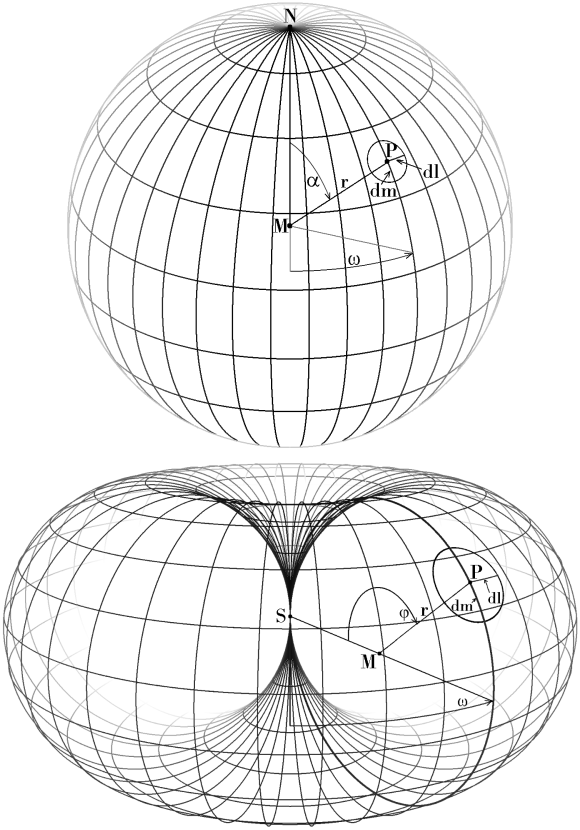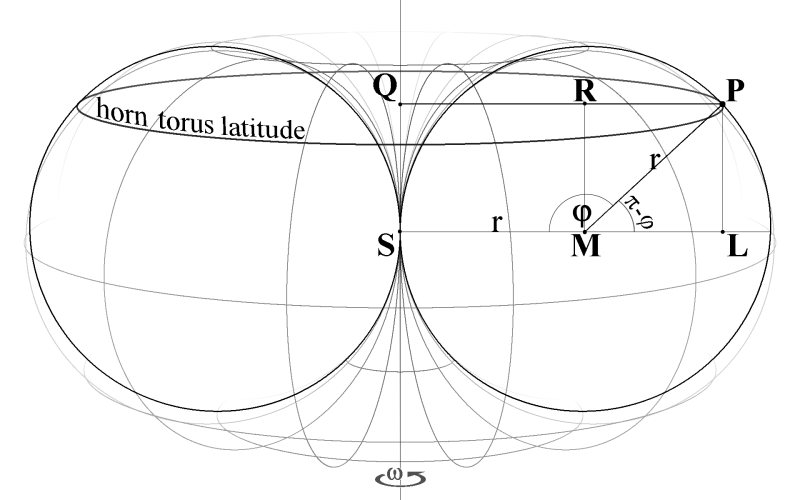

|
We consider the small circle around any point P and state the condition that the radii dm (in direction of meridians) and dl (parallel to latitudes) have to be equal. Lengths m of longitudes (meridians) on both figures, sphere and horn torus, are m = 2π·r Lengths l of latitudes are computed differently (* see supplement for derivation):l = 2π·r·sinα on the sphere and dm = r·dα on the sphere and dl = dω·r·sinα on the sphere and dα = dω·sinα for the sphere and dα/sinα = dφ/(1 - cosφ) and finally by integration we obtain the condition for conformal mapping∫(1/sinα)dα = ∫(1/(1 - cosφ))dφ φ = 2·arccot(-ln(|tan(α/2)|) - C) horn torus → sphere:α = 2·arctan(e^(-cot(φ/2) + C)) (0 < α < π, 0 < φ < 2π, C any real number) C is a kind of 'zoom/diminishing factor' for the mapped figures and shifts them:case α → φ: φ moves towards 2π with increasing C > 0, towards 0 with C < 0, case φ → α: α moves towards π with increasing C > 0, towards 0 with C < 0, conformality is given for C ≠ 0 as well, i. e. there is an infinite set of solutions - but mappings are not bijective, when C ≠ 0 is the same in the inverse mapping (likewise: Riemann stereographic projection is a special case amongst others) © 2018 Wolfgang W. Daeumler, Perouse |

| QP = QR + RP = SM + ML = r + r·cos(π - φ) = r − r·cosφ = r·(1 − cosφ) l = 2π·QP l = 2π·r·(1 − cosφ) |